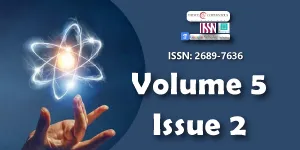Sound Energy Harvesting and Converting Electricity (SEHCE)
Main Article Content
Abstract
The research study “Sound Energy Harvesting and Converting Electricity (SEHCE)” aims to create a better and easier way of producing another source of clean and renewable energy through sound. The study did not aim to be compared to other proven sources of electricity such as heat, wind, solar and hydroelectric, instead, it was created to find and explore new ways of producing an alternative source of energy. The project will undergo several processes such as designing, construction, testing, and evaluation. Through this, the researcher will be able to find out that sound energy can be converted to electricity.
Downloads
Article Details
Copyright (c) 2022 Boco MA.

This work is licensed under a Creative Commons Attribution 4.0 International License.
Licensing and protecting the author rights is the central aim and core of the publishing business. Peertechz dedicates itself in making it easier for people to share and build upon the work of others while maintaining consistency with the rules of copyright. Peertechz licensing terms are formulated to facilitate reuse of the manuscripts published in journals to take maximum advantage of Open Access publication and for the purpose of disseminating knowledge.
We support 'libre' open access, which defines Open Access in true terms as free of charge online access along with usage rights. The usage rights are granted through the use of specific Creative Commons license.
Peertechz accomplice with- [CC BY 4.0]
Explanation
'CC' stands for Creative Commons license. 'BY' symbolizes that users have provided attribution to the creator that the published manuscripts can be used or shared. This license allows for redistribution, commercial and non-commercial, as long as it is passed along unchanged and in whole, with credit to the author.
Please take in notification that Creative Commons user licenses are non-revocable. We recommend authors to check if their funding body requires a specific license.
With this license, the authors are allowed that after publishing with Peertechz, they can share their research by posting a free draft copy of their article to any repository or website.
'CC BY' license observance:
|
License Name |
Permission to read and download |
Permission to display in a repository |
Permission to translate |
Commercial uses of manuscript |
|
CC BY 4.0 |
Yes |
Yes |
Yes |
Yes |
The authors please note that Creative Commons license is focused on making creative works available for discovery and reuse. Creative Commons licenses provide an alternative to standard copyrights, allowing authors to specify ways that their works can be used without having to grant permission for each individual request. Others who want to reserve all of their rights under copyright law should not use CC licenses.
Attia MF. Law of conservation of energy from Evaluation of Electric Energy Generation from Sound Energy. 2016.
Putrevu’s SA, Chaladi’s SK. (April-May 2015) Generation of Electricity Using Sound.
Researchers of the International Conference (March 2015) Generation of Electical Energy from Sound Energy.
Cohen-Tanugi D. There is definitely energy contaned in that sound.from Sarah Jensen’s Can sound be converted to useful energy?. 2011.
Punzalan A. Pressure and Temperature. Exploring Science and Technology
eSchool Today (2015) Different forms of energy and what is sound energy? From https://www.eschooltoday.com/what–is-soundenergy/kinds-of-energy.html
European Commission (2017) Environmental Noise from ec.europa.eu/environment/noise/index_en.html
Elert G. Sound energy is a kind of mechanical energy, and mechanical energy could be converted into electricity. 2017. From https://physics.info/energy/
Slemon G. Electric Generator. 2015. https://www.britanica.com/technology/electric-generator
Dave J, Ansari P. Electricity Generation by vibrating Piezoelectric crystals. 2013. www.acadamia .edu/5406363/ELECTRICITY_GENERATION_BY_VIBRATING_PIEZOELECTRIC_CRYSTAL_IN_ROADWAY
Arciaga ME, Rara BA. Electromagnetic Induction. Exploring Science and Technology
Davis RE, Frey R, Sarquis M, Sarquis JL. Histrorical Chemistry, Periodicity, Hydrogen and Helium. Modern Chemistry
Reseachers of Groiler International Danbury Conecticut “The Electromagnet, Sound, Atomic Structure, Gas and Their properties”, The New Book of Popular Science 3.
Gillapsy R. Fossil Fuels advantages and disadvantages. 2015. from study.com/academy/lessom/what-are--fossil-fuels-definition-advantage-disadvantage.html
Fuchs SV. Helium, Energy, Energy Budget, Electromagnetism, Oxford Illustrated Encyclopedia
Schaaf WL. Velocity of the Sound. 4 High School Subject Selftaught 4.

